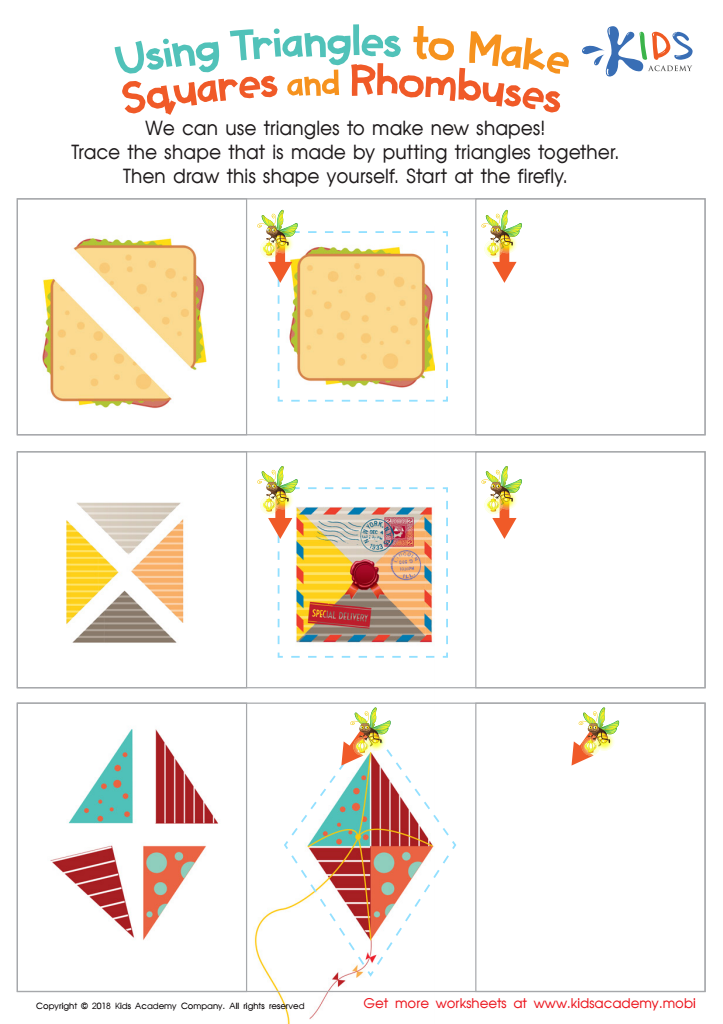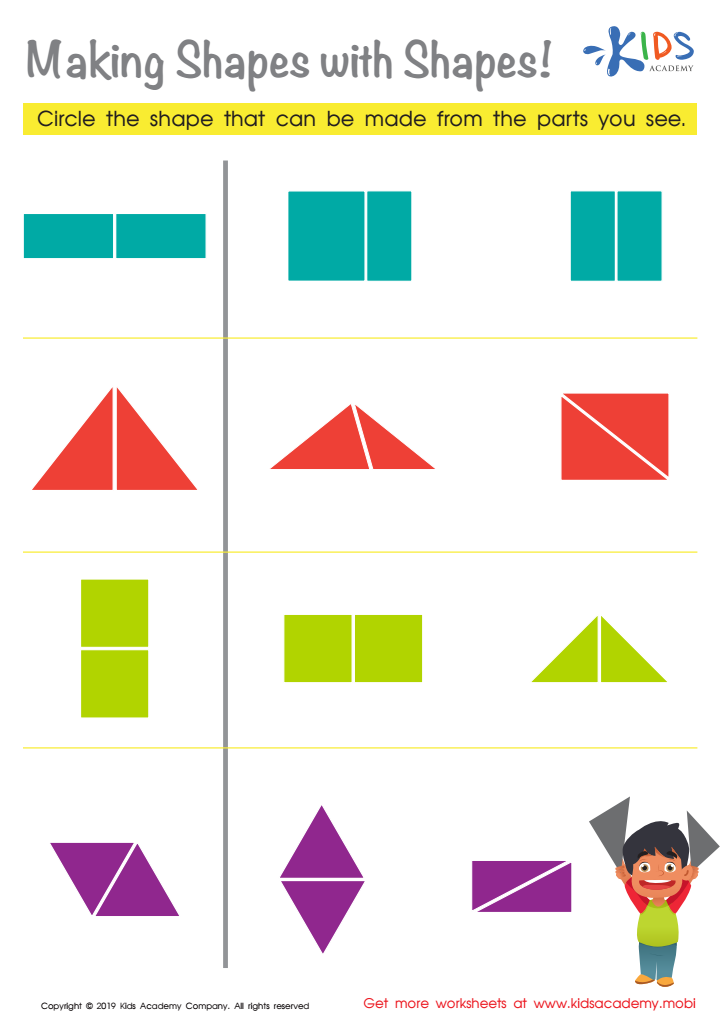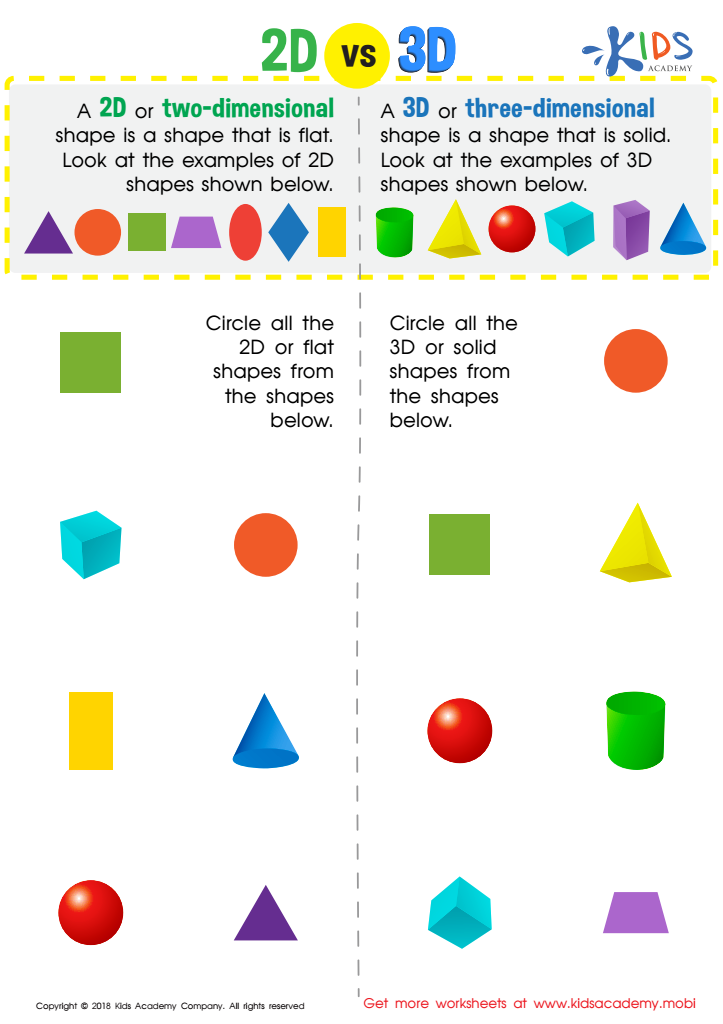Spatial understanding Geometry Worksheets for Ages 6-7
3 filtered results
-
From - To
Enhance your child's spatial understanding with our engaging Geometry Worksheets, specially designed for ages 6-7! These fun and interactive worksheets focus on essential spatial concepts, helping young learners grasp shapes, sizes, and positions in a hands-on way. Through a variety of activities, including puzzles, matching games, and drawing exercises, children will develop critical thinking skills and a foundation in geometry. Perfect for classroom use or at-home learning, our worksheets aim to make geometry exciting and accessible. Foster your child's confidence in their spatial abilities while reinforcing important math skills. Explore the world of geometry today and watch their understanding grow!


Using Triangles to Make Squares and Rhombuses Worksheet


Making Shapes with Shapes Worksheet


2D vs 3D Shapes Worksheet
Spatial understanding in geometry is critical for young children's cognitive development, particularly for those aged 6-7. At this age, children are forming essential mathematical foundations that will influence their problem-solving skills and logical reasoning abilities throughout their lives. Understanding basic geometric concepts helps children to navigate and interact with the world around them, enhancing their spatial awareness.
When children comprehend shapes, sizes, and the relationships between objects, they develop skills that are not only important in math but also in subjects like science, art, and even reading. For instance, recognizing patterns and symmetry aids in creativity, while grasping spatial relationships is vital for reading maps or solving puzzles.
Teachers and parents play an integral role in fostering this understanding. Engaging children in activities involving building blocks, puzzles, and geometric games nurtures critical thinking and encourages exploration. By prioritizing spatial understanding, adults help children build confidence and competency in mathematics, setting the stage for future academic success. Moreover, these skills support everyday tasks, helping children to think critically and solve real-world problems as they grow. Enriching a child's early experiences with geometry will benefit them far beyond the classroom, creating capable and confident learners.

 Assign to My Students
Assign to My Students
















